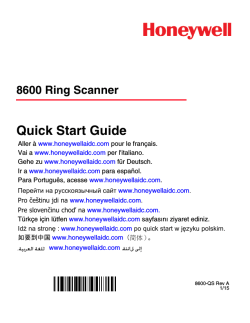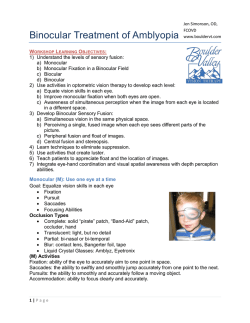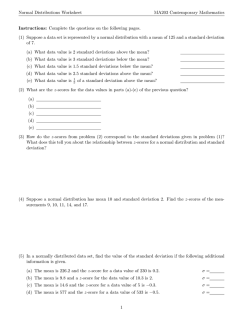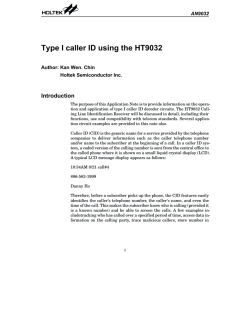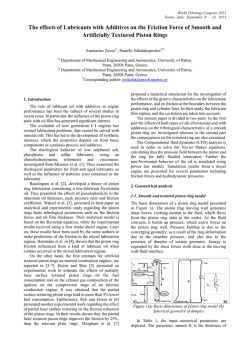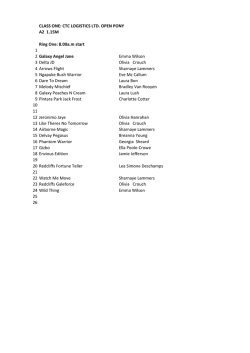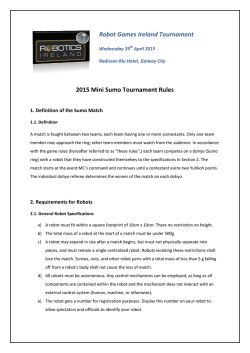
know more about the Ring Test - Food and Agriculture Organization
THINGS TO KNOW ABOUT THE RING TEST FAQ about the FAO-IAG Ring Test GENERAL QUESTIONS What is a ring test? A ring test (also called as proficiency test) is an inter-laboratory test that allows to evaluate the performance of testing laboratories, and is based on analysis of similar homogeneous samples. The aim is to enable laboratories to assess and improve their feed analysis performance. Why should labs participate in ring tests? A ring test offers to a laboratory a possibility of external quality assessment of the analytical results it produces. Any laboratory which needs independent assessment of the quality of analytical results it produces should participate in ring tests and take the opportunity to compare own performance with other laboratories. Ring tests can monitor the quality of analytical results and identify assays that need improvement through for example staff training, proper use of equipment, suitability of methods, among others. Ring tests are an essential part of quality control measures to demonstrate competency to accreditation bodies, customers and other regulatory bodies. Which methods should be applied for ring test samples? Ring test samples should be analyzed using the same methods that are applied for the routine samples of the same matrix. Use of standardized methods (e.g. ISO) or international recognized protocols should be preferred. Ring test samples should not be given any special treatment and must be analyzed under the conditions used for the routine samples. How many replicates of ring test samples should be conducted? The ring test samples must be analyzed under the same conditions including the number of replicates as the routine samples. In routine if a sample is analyzed for a particular parameter in duplicate, then the ring test sample must be analyzed in duplicate for that parameter. How do the results of the ring test allow laboratories to evaluate their performance? In a ring test quantitative criteria (such as the z-scores) are often used for evaluation of the laboratory performance. For each assay ‘z-score’ is calculated: xlab x xRT l z-score = l labs RT xRT sRT result of the lab mean of the all results from the participating laboratories standard deviation of all results The numerator shows the difference between the laboratory result and the mean of all results from the participating laboratories in the ring test, for a particular parameter. The standard deviation s in the denominator is the extent of the actual deviation of all results. Mostly the following classification is used: | z | ≤ 2: satisfactory result 2 < | z | < 3: doubtful result | z | > 3: unsatisfactory result All doubtful or unsatisfactory results must be critically examined for all possible sources of error. Measures should be taken to avoid errors and improve results. When does a laboratory participate in a ring trial successfully? Sometimes the organizer of ring tests assesses the participants’ performance. Normally 80% successful results (|z|≤ 2) is considered as a successful participation. Regardless of a final assessment each laboratory should carefully analyze its results based on its own criteria (e.g. z-score, percent recovery, measurement uncertainty, etc: see FAO-AGA Manual 14; http://www.fao.org/docrep/014/i2441e/i2441e00.pdf for their calculations). If the quality of results is unsatisfactory the laboratory should take appropriate corrective action and then check whether these measures were successful in bringing the z-score to ≤2 SPECIFIC QUESTIONS Should a laboratory analyze all parameters listed in the announcement of the ring test? No, the laboratories should analyze those parameters that they usually analyze in routine. Which information does the evaluation include? Laboratories find the following information for every parameter in the evaluation they receive: (1) A list of results from all laboratories, their z-scores and the methods used. (2) average of all results (x) as: x = ∑ results number of results (3) median of all results = numerical value separating the higher half of a data sample from the lower half. The median of a list of numbers can be found by arranging all the observations from lowest value to highest value and picking the middle one. The median gives a measure that is more robust in the presence of outlier values than is the mean. (4) standard deviation (s) measures the amount of variation or dispersion from the average. (5) coefficient of variation is a relative measure of dispersion. It is the ratio of the standard deviation (s) to the mean (x) expressed as a percentage. s CV = x * 100 The above graph shows the z-scores of laboratories in ascending order. The limits of z-score 2 and 3 are plotted in the graph. Does opening of the sample bag, for example during transit, influence the results? And why did you highlight outliers and stragglers of moisture in the 2014 evaluation report? The results of moisture depend on the transport and storage conditions. The determination of moisture is the basis for calculation of dry matter. The results of all parameters are corrected for dry matter and hence the content of moisture will not affect the results. Therefore outliers and stragglers for moisture were not included in the performance characteristics of the laboratories (certificate) but were only highlighted for information. In subsequent years (2015 and beyond) the results of moisture will be mentioned in the evaluation only for information and without identifying outliers and stragglers. Does the preparation of samples (grinding) influence the results? Grinding can have effects on some parameters because of: Heating (heat sensitive feed additives like phytase, vitamins, tannins… might get inactivated, and the moisture content can change) Solution: avoid heating the grinding mill (grind small amount of sample each time) Cross-contamination of some trace elements Solution: Thoroughly clean the laboratory grinding mill between samples Abrasion of an unsuitable rotor of the grinder (high contamination of Cr and Ni due to their presence in the rotor) Solution: use only feed grinding mills with appropriate rotors if you analyze Ni and Cr What is the proper way of presenting the results? Regarding the decimal symbol all participating laboratories are requested to follow the specification of the ring test. Do not use a comma or a dot as a thousand separator. The comma should NOT be used as decimal symbol. A dot (full stop symbol) should be used as a decimal point. QUESTIONS RELATED TO THE ORGANIZATION OF THE RING TEST Is the FAO-IAG ring test conducted annually? Yes. We plan to conduct an FAO-IAG Ring test in 2015 with the same procedure (2 samples: one forage and one mixed concentrate feed) as followed in 2014. In Fe bruary 2015 you will get information regarding the procedure. In which way can laboratories register for the next ring test? A notice for registration and participation will be sent through FAO networks in February 2015. What is the cost of participation in the ring test? € 80 per laboratory; for two samples. What is the timetable for the ring test 2015? Invitation: First week of February Last day for Registration: February 28 Last day for Payment of participation fee: April 24 Delivery of samples: Mid of May Analysis of sensitive analytes: June 29 – July 3 Deadline for submission of results: July 28 Report:September How many and how much sample will be sent for analysis in 2015? Two samples: one forage and one mixed concentrate feed, each about 700 g. Will FAO support labs for the participation in 2015? Some laboratories will be supported, depending on the funds available. What could delay the evaluation time and sending of the results to participating laboratories? Inconsistent manner of presentation of results, especially for the decimal symbol: some use a comma and some use a dot (for example 25.7% and 25,7%). All participating laboratories are requested to follow the specification of the ring test. Additionally correct units should be considered (for example g/kg and g/100g). Irmengard Strnad Harinder P.S. Makkar AGES FAO Austrian Agency for Health Animal Production and Food Safety and Health Division Vienna, Austria Rome, Italy
© Copyright 2025
